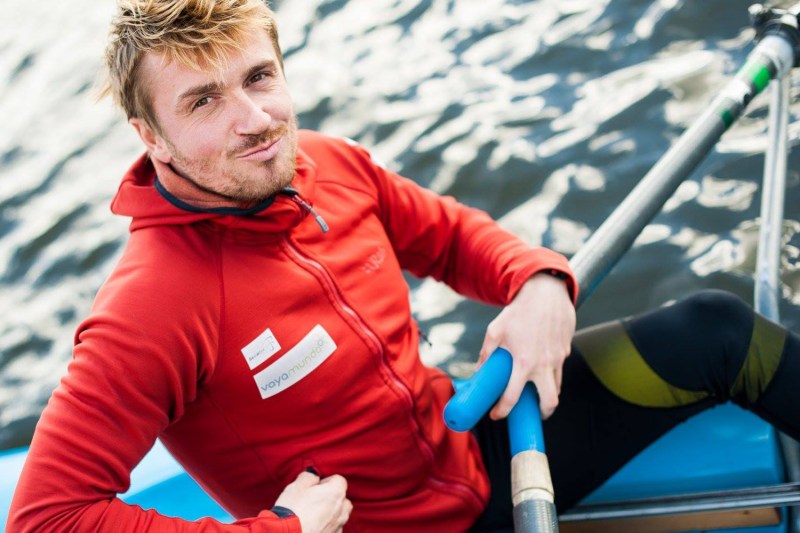
Belgian adventurer and physiotherapist Jelle Veyt is attempting to summit the tallest mountain on each continent by human power only. He will cycle, row, hike, and climb more than 50,000 miles over eight years to each of the 7 Summits. Right now, he’s six years into the adventure.
The 7 Summits are the tallest mountains on each continent: Elbrus in Europe, Everest in Asia, Puncak Jaya in Oceania (Indonesia), Kilimanjaro in Africa, Denali in North America, Aconcagua in South America, and Vinson on Antarctica. The altitudes of the peaks range from Puncak Jaya at 16,024 feet in Papua, Indonesia to the tallest of them all, Mount Everest, at 29,029 feet in the Himalayas.
The Road So Far
Veyt started riding in 2013 with €3,000 ($3,300) to his name. He rode his bicycle through Germany, Poland, and Ukraine to the border of Russia and Georgia for his first stop: Mount Elbrus. While not an extremely challenging mountain, Elbrus is still 15,554 feet tall and demands very good fitness. After riding through three countries, you could say Veyt had practiced pretty good cardio — he had had leg days for two months straight.

Summiting Elbrus confirmed that this human-powered 7 Summit quest could be done. But it certainly wasn’t going to be easy. Riding Europe and climbing Elbrus was probably the easiest part. At the time, he didn’t know he had massive Himalayan avalanches, man-eating crocodiles, and open-water hallucinations to look forward to.
From Elbrus, Veyt started the 6,200-mile ride to Everest. After nearly giving up from boredom on the Kazakh leg and riding through -15 degree weather up to the Tibetan Plateau, Veyt finally made it to Kathmandu, the gateway to Everest basecamp.
Everest does not give up summits easily. Just as Veyt was preparing to climb in 2014, a massive serac collapsed in the Khumbu Icefall killing 16 sherpa. All expeditions were canceled.
The following year didn’t bring better luck. The Gorkha 8.1 earthquake hit Nepal, bringing down a massive avalanche on Everest. Veyt had just returned from Camp 2 and was making a video in the basecamp when the slide hit. He managed to get to safety in one of the tents as the tail end of the slide engulfed the site. Tragically, 19 people were not so lucky that day.
Finally, in 2016, he got the time and weather to summit the world’s tallest mountain. Veyt then started the 5,500-mile ride and row to Papua to climb Puncak Jaya (or Carstensz Pyramid).

Once Veyt reached East Java, the rowing began. It would take weeks to reach Papua, just north of Australia.
With so many islands in the area, rowing was mostly island hopping. Friends from Europe and Australia dropped in and would help row for a few days here and there, which helped over the long open-water crossings. One particular long crossing Veyt had to attempt solo, which resulted in dehydration-induced hallucinations in the middle of the ocean. He smartly opted to text for a rescue, taking him back to where he started the crossing to recover.
After finally reaching Papua, Veyt found that roads suitable for riding hardly existed. He and a friend slogged through the wet mud only to reach military checkpoints around Puncak Jaya not allowing him through due to separatist fighting in the area. Foreign visitors were completely banned from the area from 1995 to 2005. The only way to Puncak Jaya was a 43-mile helicopter ride to the base where they could climb from.

With the third mountain on his list crossed off, he flew back to Belgium in January 2019 for some much-needed rest and to organize the next leg of the trip: cycling through Africa to Kilimanjaro.
What’s Next for Jelle Veyt?
In August 2019, Veyt started hand-biking with a friend from Belgium to Gibraltar. After a five-hour paddle, they were in Africa to start the 6,200-mile bike ride to Kilimanjaro.
Using the live tracker on his website, at the time of writing, we found Veyt in Senegal on the African west coast camping in abandoned houses and avoiding the military removing mines just off the road nearby. He expects to reach Kilimanjaro by June 2020, crossing off four of the 7 Summits.
What then?
Oh, just paddling the Atlantic Ocean, cycling the length of North and South America, and skiing Antarctica. Veyt calls the project the 7 Summits of Happiness.
You can follow the rest Jelle Veyt’s journey on Instagram.


